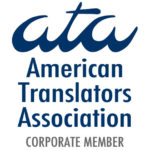You’ve thought up a spectacular story, your words flow with ease, you’ve finished your body of work, yet the process has just begun. Many people will argue that a written project has many layers. Dominick Dunne, an American writer and investigative journalist, once stated “even if you write it wrong, write and finish your first draft. Only then, when you have a flawed whole, do you know what you have to fix.”
The process of fixing a draft is known as editing or proofreading. Although similar, these two terms are not the same. According to the Merriam-Webster, editing is “to prepare something written, filmed or recorded to be published or to make changes, corrections to mistakes, etc.” Whereas proofreading is “to read and correct mistakes in a written or printed piece of writing”.
From the dictionary definition, it is hard to differentiate the two; but there is a key difference.
Editing is going through and making grammatical changes such as grammatical errors and punctuation. Through this process, you are actually making changes physically to adjust the content. Editing takes a deeper look at how info is presented and can happen multiple times throughout the project.
Proofreading, on the other hand, happens towards the end of the process. Proofreading, in regards to the nature of the term, is reading for proof and credibility of the final product. Finding credible and cohesive content at large instead of commenting on minors errors in structure or grammar.
Although these terms are similar, they are not interchangeable. They are both equally crucial in the writing process. Without editing an author runs the risk of publishing a piece of work with errors in structure, tense, tone and grammar. And without proofreading it is possible to miss surface mistakes that were overlooked in the editing process. So make sure you’ve accomplished both steps of the process before your project is truly complete.













